Nature Post! Cool Stuff!
Mostly pictures here, because I was out marveling at the loveliness of my lake again... I did not have the energy this weekend to go climb down into a ravine and then back out again. Maybe this weekend. Anyway... my lake had some presents for me that I might not have found if I hadn't gone out to one of my special spots...
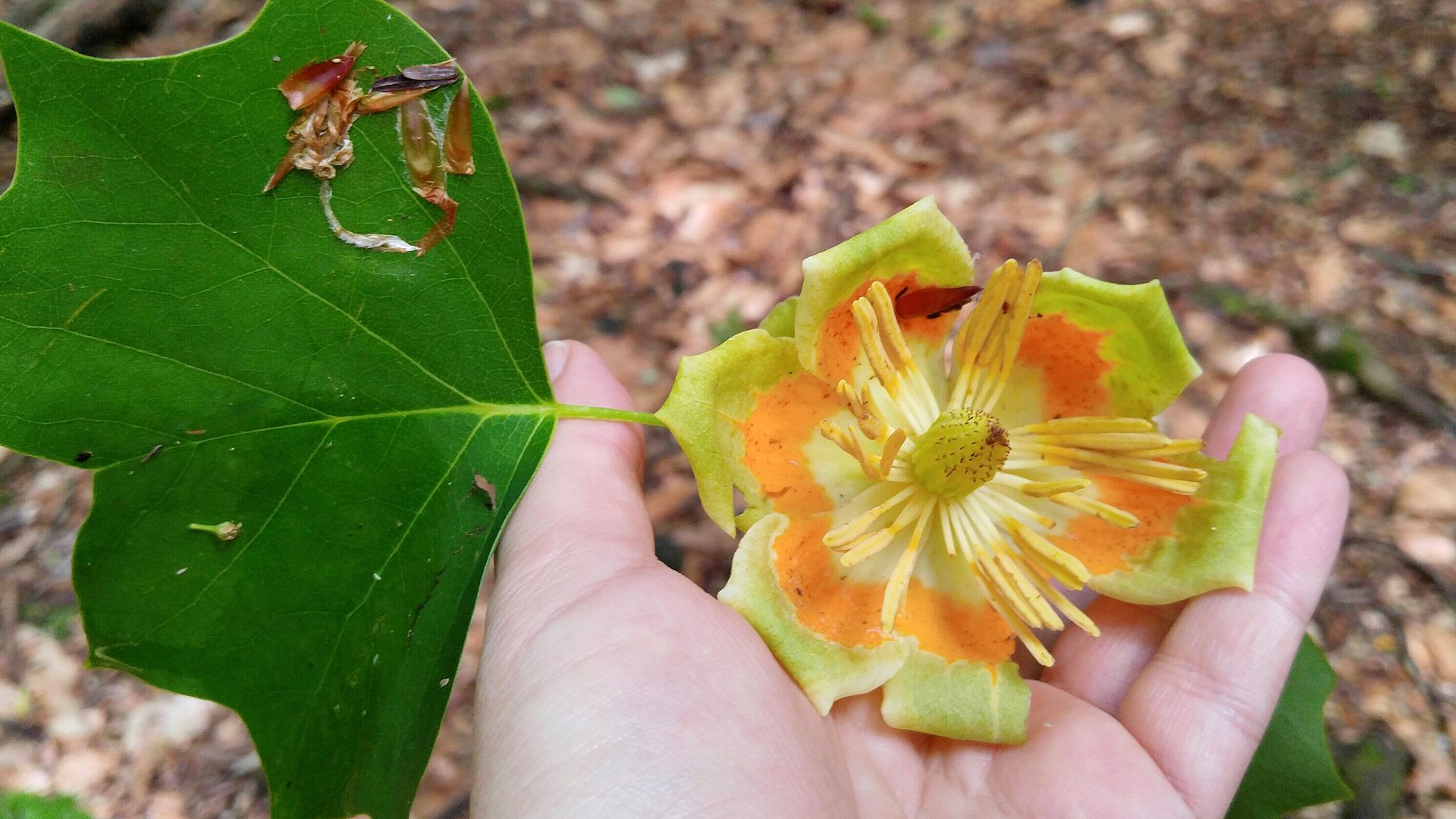
First off, it's a tulip poplar flower. It's always nice when they're intact like this. Like with the dogwoods in my last post, those aren't actually petals... they are bracts, modified structures that on most flowers are green. The bit in the middle is the female part and it will turn into a cone-like structure with lots of delicate little winged seeds.

Wild columbine. The garden varieties are much showier but I love the pretty blush pink of the natives. Actually, it's just our locals that are this shade of pink... members of this genus will very happily hybridize and you can get a very wide variety of colors, usually reds and yellows.
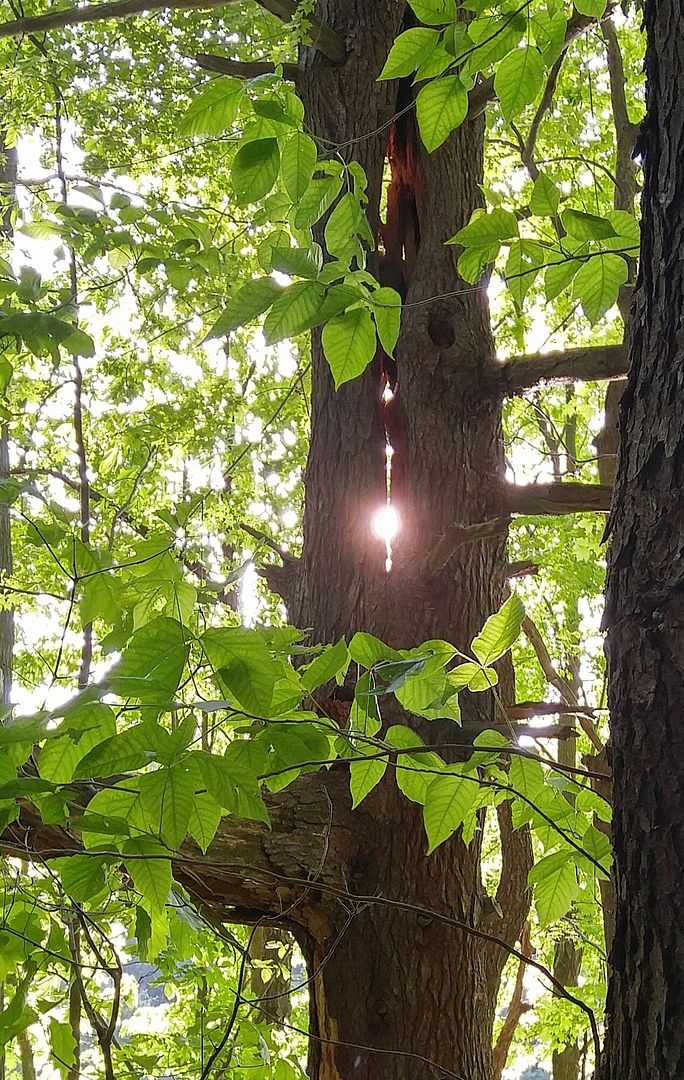
I've been watching this tree for years now, and that hole right through the middle gets bigger every year but the tree doesn't die, and this was the first time I'd ever been here at just the right time of evening to catch this special moment.
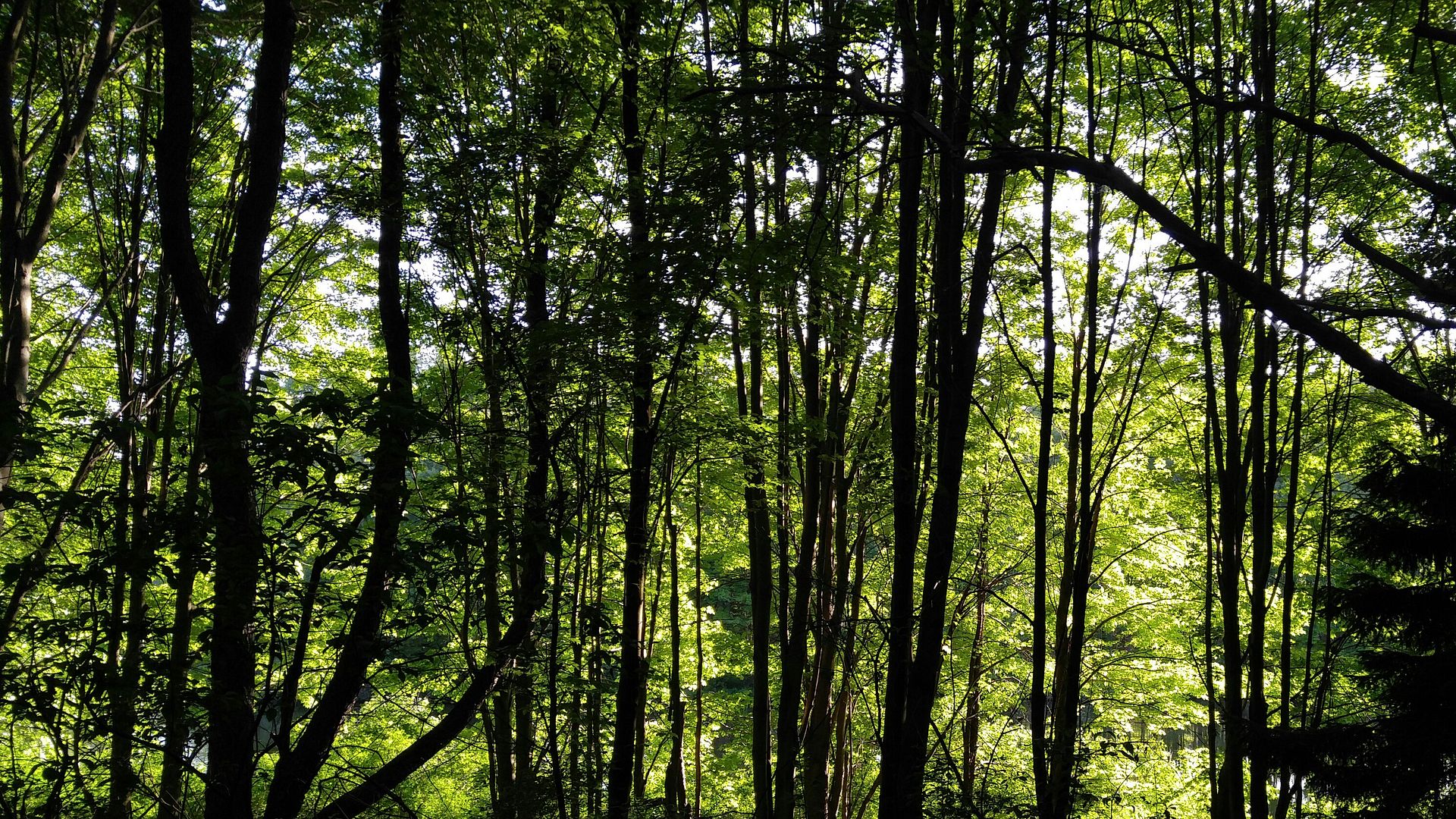
The greening of my world is nearly complete now, although the leaves are still very young and bright.

This is a quiet little spot off the main part of the lake. It's sheltered from even a ripple by this little hook of land...
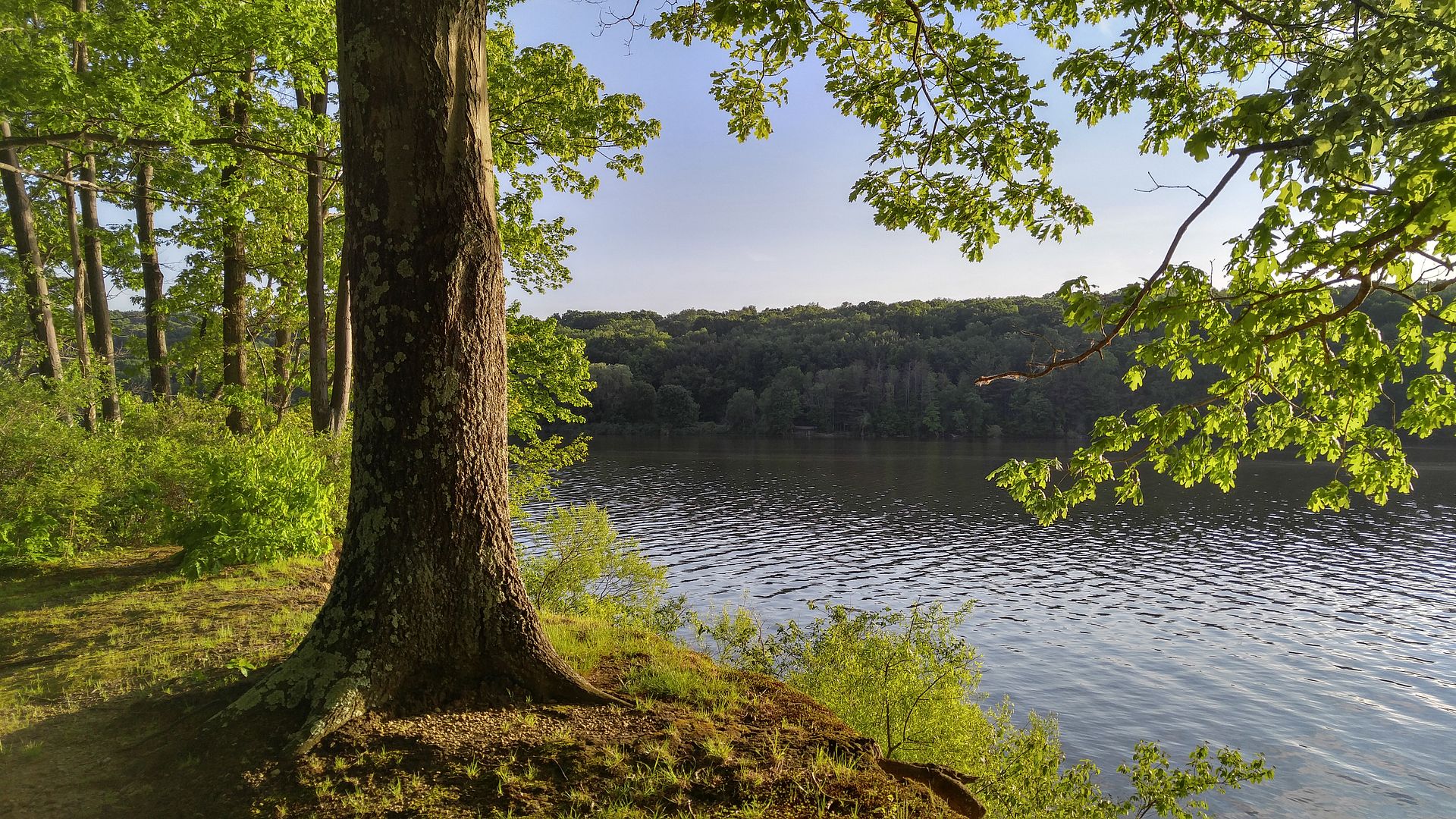
The last picture was the sheltered side of the hook, and this is the lake side. It's only about twelve feet across at the widest parts.
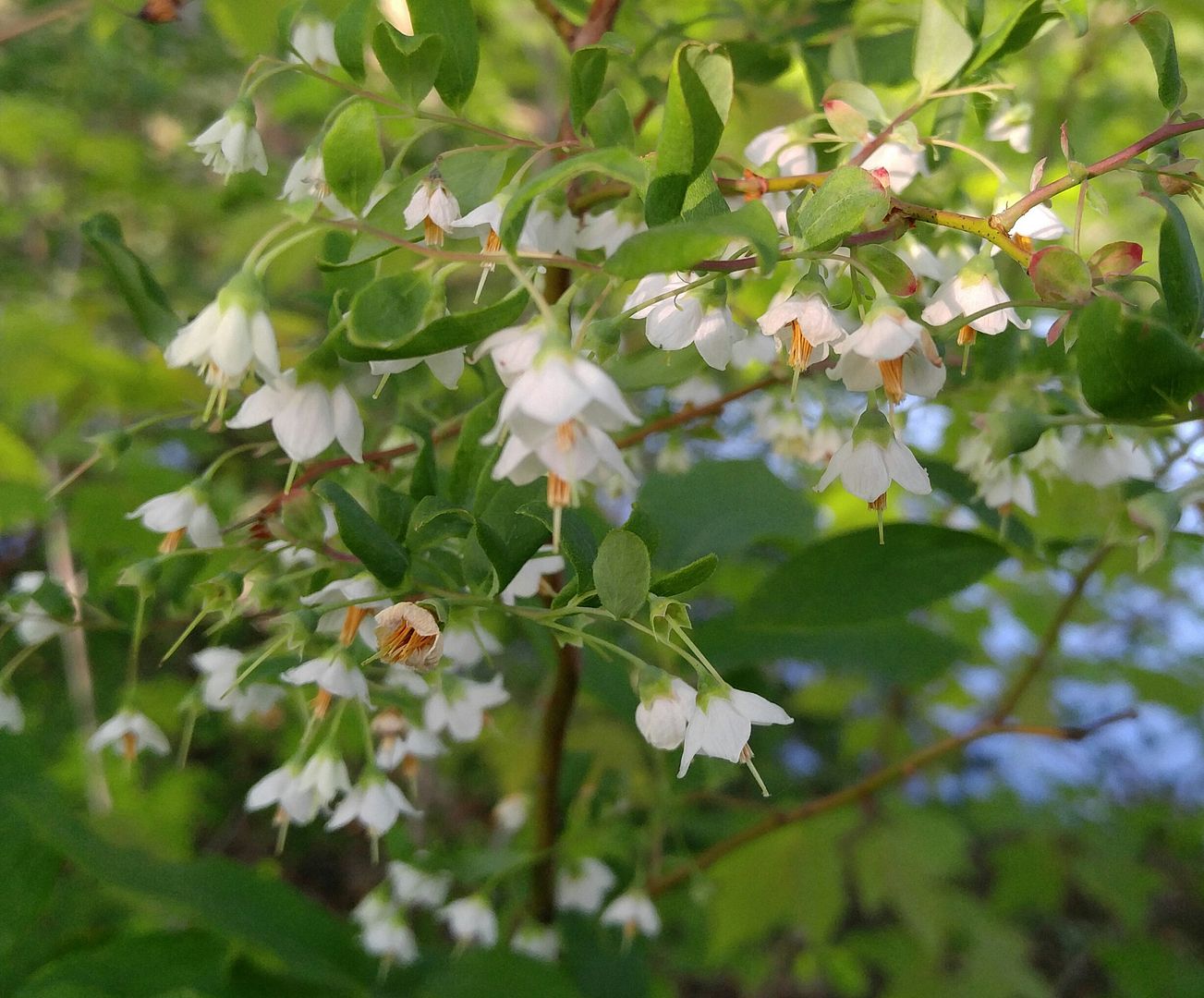
On this hook I found two of these shrubs, which I don't recall ever seeing before and which are annoying me tremendously.

See, I'm fairly sure they are a member of the Styrax genus, also known as storax or snowbell. These shrubs are mostly tropical, and they are mostly native to parts of Asia, although some are native to South America. ONE, and only one, is native to North America: Styrax americanus. However... it's a southern belle, tolerating temperatures no colder than Virginia, which is nearly tropical compared to the Great Lakes area. So this really can't be that. On the other hand, Styrax japonicus, the Japanese snowbell, is a small ornamental garden tree grown all over the world. And Japan is far from being tropical, so these MIGHT be winter-tolerant. But I'm not sure about it and I am annoyed.
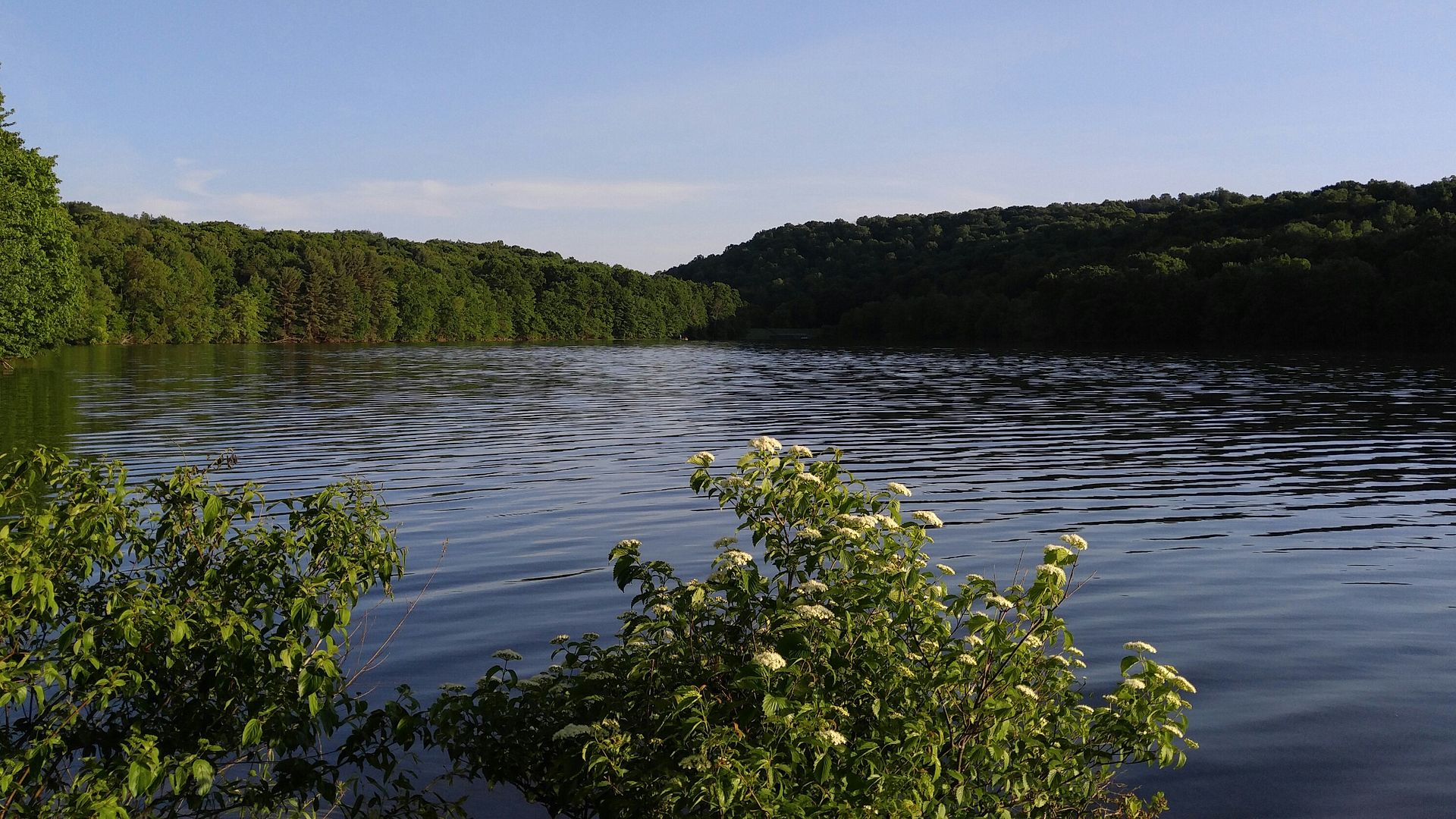
This is the view from the very tip of the hook, which now has a new name because of this discovery...
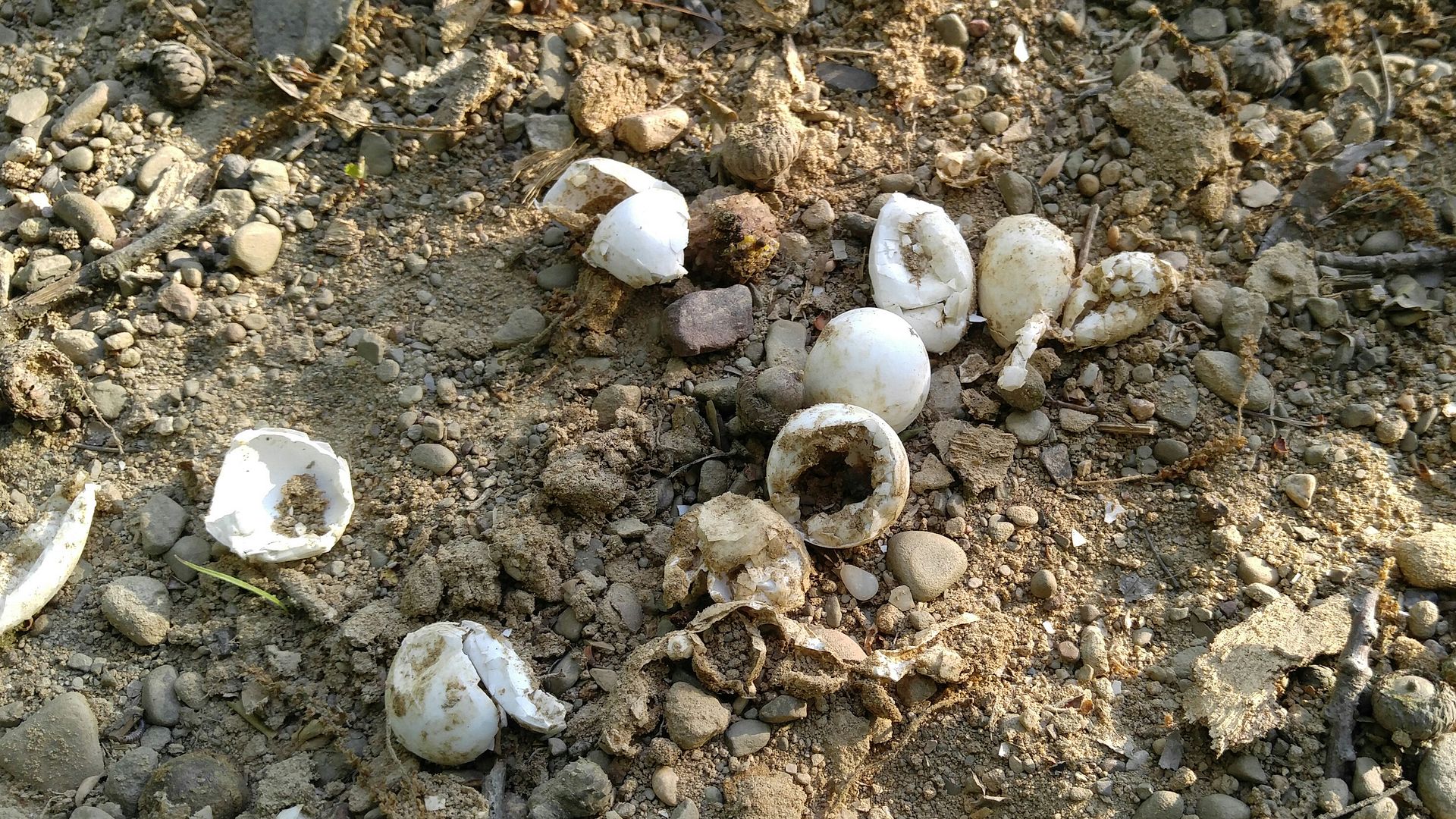
It is now called Turtle Island!
(no, it's not an island)
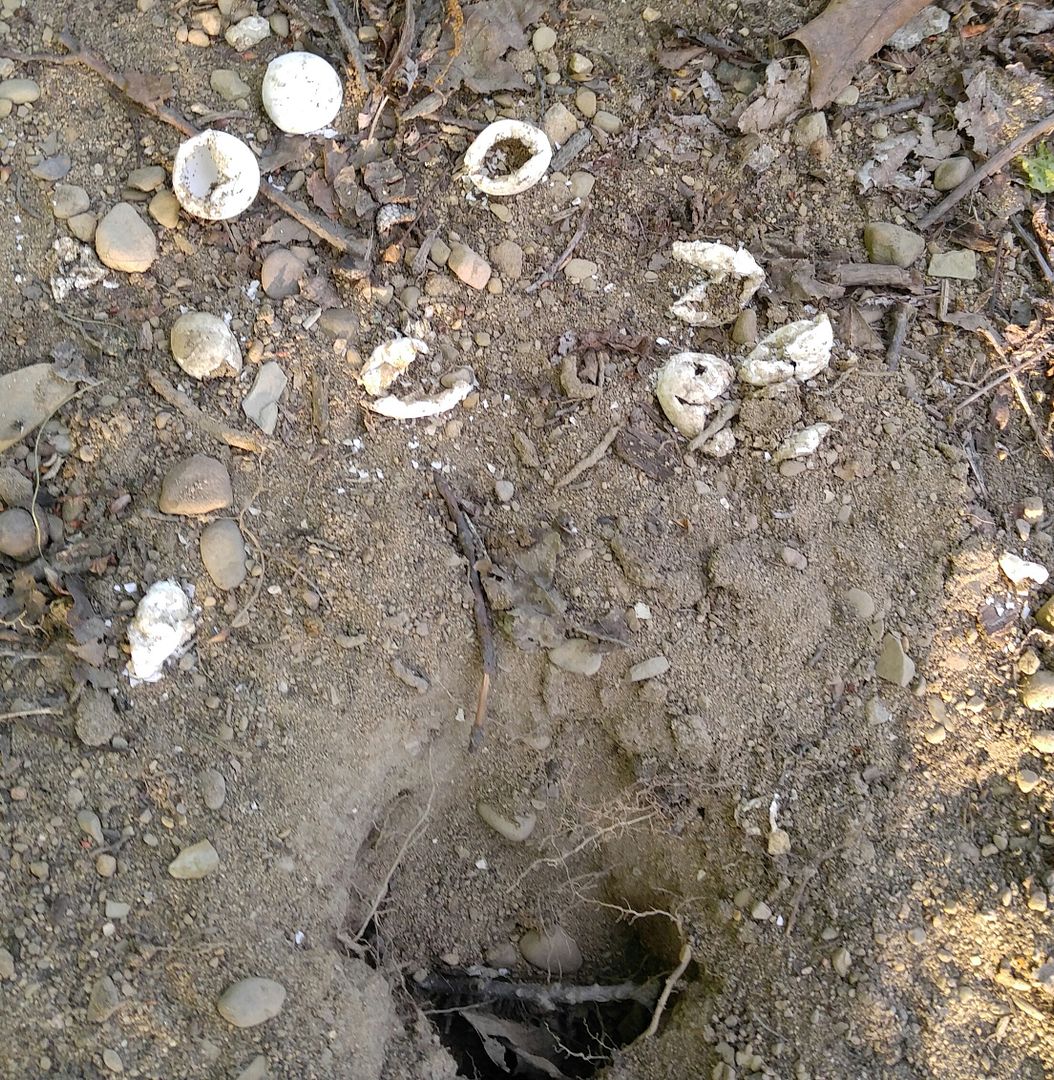
The whole place was strewn with the little leathery shells of hatched turtles, and the dirt was all scrabbled and stirred up!
First of all, turtle shells are not at all like bird egg shells. Reptile shells are flexible, tough, and thick.
Second of all...
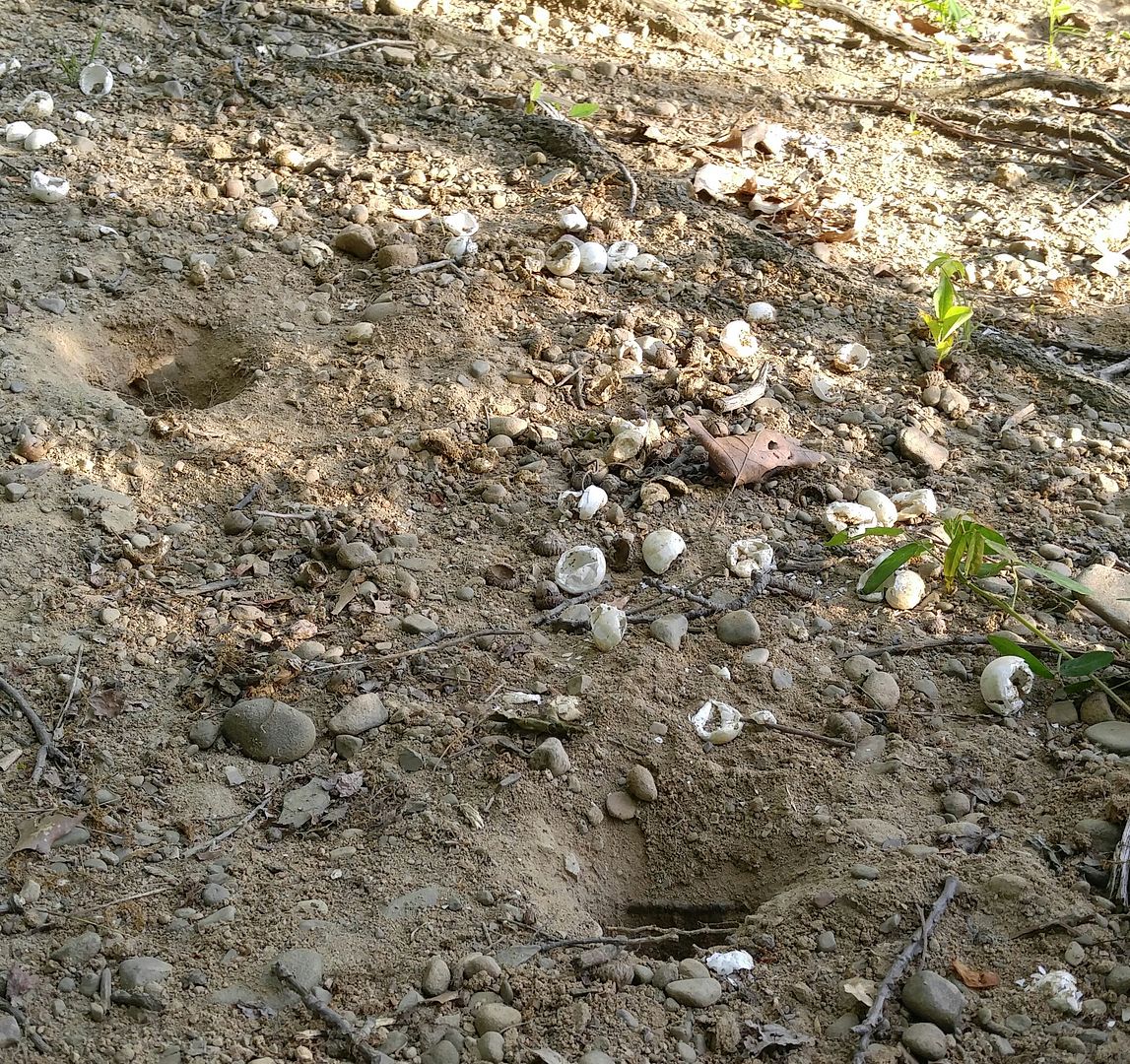
See all the holes?
Turtles did not evolve their shells for protection. For whatever reason, they evolved very broad and flattened ribs that fused and grew in all sorts of weird ways. Some ancestral turtles have a lower shell but no top one. While the general speculation is that the first true turtles were aquatic and that turtles only moved onto land later, some scientists think that the shells evolved for another reason... because turtles were DIGGERS, and the broad, fixed ribs anchored powerful digging muscles. The ancestors of turtles are strange and it's hard to tell which are true ancestors and which are bizarre experiments on the evolving turtle body plan.
The debate is not over, but one thing is clear... no turtle, from a desert tortoise to a flippered, full aquatic sea turtle lays eggs in the water.
In fact, no reptile lays eggs in the water. All reptiles are air-breathers. Unlike amphibians, who can absorb oxygen from water through their skin, reptiles evolved a tougher, more durable skin that would hold in water, adapted to living on land... and so did their eggs. From the translucent, delicate, squishy, watery amphibian eggs, reptile eggs evolved a leathery, tough shell that would keep the embryo from drying out. Those embryos in those shells, though, still needed oxygen. The reptile shell is permeable and lets oxygen in without letting water out.
Laid in water, reptile eggs would drown. So turtles, even sea turtles, drag themselves onto the land and dig burrows for their land-bound eggs. Once reptiles evolved the adaptations that let them (and their eggs) survive on land, many of them did evolve to go back to the water, but they still all need to breathe air, and that includes before they hatch.
Anyway, that will be all.
.
.
.

First off, it's a tulip poplar flower. It's always nice when they're intact like this. Like with the dogwoods in my last post, those aren't actually petals... they are bracts, modified structures that on most flowers are green. The bit in the middle is the female part and it will turn into a cone-like structure with lots of delicate little winged seeds.

Wild columbine. The garden varieties are much showier but I love the pretty blush pink of the natives. Actually, it's just our locals that are this shade of pink... members of this genus will very happily hybridize and you can get a very wide variety of colors, usually reds and yellows.

I've been watching this tree for years now, and that hole right through the middle gets bigger every year but the tree doesn't die, and this was the first time I'd ever been here at just the right time of evening to catch this special moment.

The greening of my world is nearly complete now, although the leaves are still very young and bright.

This is a quiet little spot off the main part of the lake. It's sheltered from even a ripple by this little hook of land...

The last picture was the sheltered side of the hook, and this is the lake side. It's only about twelve feet across at the widest parts.

On this hook I found two of these shrubs, which I don't recall ever seeing before and which are annoying me tremendously.

See, I'm fairly sure they are a member of the Styrax genus, also known as storax or snowbell. These shrubs are mostly tropical, and they are mostly native to parts of Asia, although some are native to South America. ONE, and only one, is native to North America: Styrax americanus. However... it's a southern belle, tolerating temperatures no colder than Virginia, which is nearly tropical compared to the Great Lakes area. So this really can't be that. On the other hand, Styrax japonicus, the Japanese snowbell, is a small ornamental garden tree grown all over the world. And Japan is far from being tropical, so these MIGHT be winter-tolerant. But I'm not sure about it and I am annoyed.

This is the view from the very tip of the hook, which now has a new name because of this discovery...

It is now called Turtle Island!
(no, it's not an island)

The whole place was strewn with the little leathery shells of hatched turtles, and the dirt was all scrabbled and stirred up!
First of all, turtle shells are not at all like bird egg shells. Reptile shells are flexible, tough, and thick.
Second of all...

See all the holes?
Turtles did not evolve their shells for protection. For whatever reason, they evolved very broad and flattened ribs that fused and grew in all sorts of weird ways. Some ancestral turtles have a lower shell but no top one. While the general speculation is that the first true turtles were aquatic and that turtles only moved onto land later, some scientists think that the shells evolved for another reason... because turtles were DIGGERS, and the broad, fixed ribs anchored powerful digging muscles. The ancestors of turtles are strange and it's hard to tell which are true ancestors and which are bizarre experiments on the evolving turtle body plan.
The debate is not over, but one thing is clear... no turtle, from a desert tortoise to a flippered, full aquatic sea turtle lays eggs in the water.
In fact, no reptile lays eggs in the water. All reptiles are air-breathers. Unlike amphibians, who can absorb oxygen from water through their skin, reptiles evolved a tougher, more durable skin that would hold in water, adapted to living on land... and so did their eggs. From the translucent, delicate, squishy, watery amphibian eggs, reptile eggs evolved a leathery, tough shell that would keep the embryo from drying out. Those embryos in those shells, though, still needed oxygen. The reptile shell is permeable and lets oxygen in without letting water out.
Laid in water, reptile eggs would drown. So turtles, even sea turtles, drag themselves onto the land and dig burrows for their land-bound eggs. Once reptiles evolved the adaptations that let them (and their eggs) survive on land, many of them did evolve to go back to the water, but they still all need to breathe air, and that includes before they hatch.
Anyway, that will be all.
.
.
.